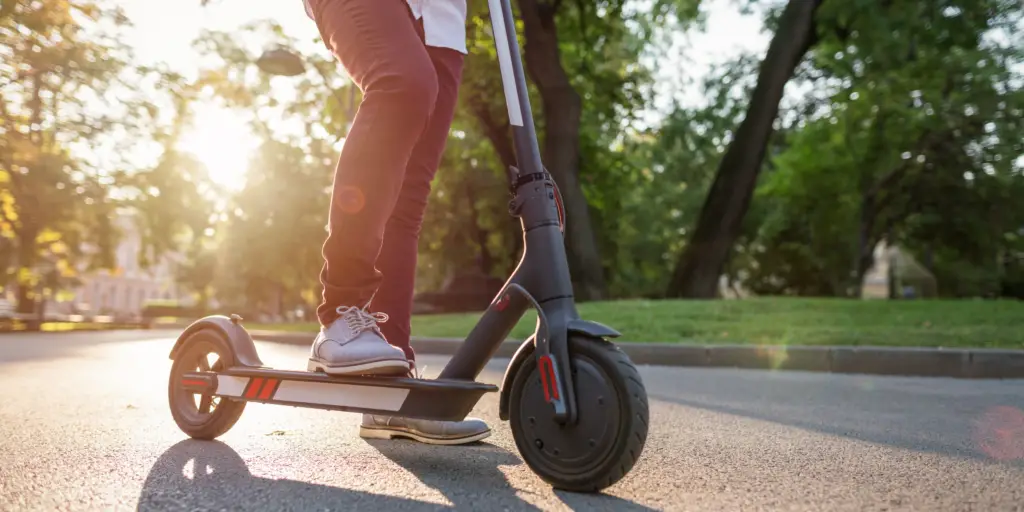As city landscapes continue to evolve, more people are turning to micromobility solutions to get around. Among these, electric scooters have soared in popularity. They’re stylish, fun, and eco-friendly, making them an appealing transportation choice for urban commuters, tourists, and anyone who just wants a quick, convenient way to zip around town. If you’ve considered hopping on the trend, this comprehensive guide will walk you through everything you need to know about renting an electric scooter—no prior experience required.

Contents
1. Why Rent an Electric Scooter?
Eco-Friendly & Sustainable:
Electric scooters are powered by rechargeable batteries rather than gasoline engines. This means significantly fewer carbon emissions, quieter travel, and a reduced impact on the environment. Renting a scooter gives you the chance to test this eco-friendly mode of transportation without fully committing to purchasing one.
Cost-Effective & Convenient:
Let’s face it—cars and taxis can be expensive, especially when navigating congested urban areas. Renting an electric scooter often costs just a few dollars per ride, making it a budget-friendly alternative. Plus, they’re widely available in major cities and often parked near popular attractions, allowing for spontaneous, on-the-spot usage whenever you need it.
Fun & Efficient for Short Trips:
Electric scooters are perfect for covering those “last mile” distances—short trips too far to walk comfortably but not worth a full cab ride. They’re a breeze to maneuver, fun to ride, and can drastically reduce the time it takes to get from point A to point B.
2. Getting Started: How to Rent
1. Download the App:
Most electric scooter rentals are arranged through apps. Major providers like Lime, Bird, Spin, and others operate in various cities worldwide. Start by downloading the app on your smartphone, creating an account, and adding your payment information.
2. Locate a Scooter Near You:
The app’s integrated map shows nearby scooters. Once you find one, walk to its location and scan the QR code on the scooter’s handlebar to unlock it.
3. Safety Checks & Adjustments:
Before you start riding, check the scooter’s brakes, bell, and tires. Adjust the handlebar height if possible, and ensure you’re comfortable with the scooter’s feel. Many apps provide basic riding instructions as well as local rules you’ll want to follow.

3. Safety Essentials
Wear a Helmet:
While it’s not always a legal requirement, wearing a helmet is the single most important safety precaution you can take. If you don’t own one, consider purchasing a lightweight, foldable helmet or look for scooter companies that provide them in select cities.
Obey Traffic Rules:
Electric scooters are often considered similar to bicycles in terms of road rules. Stay in designated bike lanes when available, follow traffic signals, yield to pedestrians, and maintain a safe speed. Be mindful of local regulations—some cities require scooters to remain in certain zones or adhere to speed limits.
Be Alert & Defensive:
Keep both hands on the handlebars and maintain a safe distance from other vehicles. Avoid distractions like using your phone while riding. Always assume other drivers might not see you and be prepared to stop or swerve if necessary.
4. Cost & Payment Options
Base Rates & Unlock Fees:
Most scooter rentals charge a small fee to unlock the scooter (often around $1) and then charge by the minute, typically ranging from $0.15 to $0.35 per minute. Keep these costs in mind when planning your trip, so you’re not surprised by the final bill.
Membership & Discounts:
If you find yourself renting scooters regularly, consider subscription plans or monthly passes offered by some companies. These plans can reduce per-minute rates, waive unlock fees, and even provide free ride minutes.
5. Sustainability & Responsible Use
Reducing Your Carbon Footprint:
Every time you choose a zero-emission electric scooter over a car, you’re contributing to cleaner air and less congestion. Over time, even these small choices can add up to a significant positive environmental impact.
Parking Properly:
When your ride is over, find a designated parking spot or at least leave your scooter where it won’t obstruct sidewalks, ramps, or doorways. Responsible parking ensures that these services remain convenient and accessible for everyone—and keeps city streets safe and orderly.
6. Troubleshooting & Customer Support
What If the Scooter Isn’t Working?
If you unlock a scooter and notice mechanical issues—such as faulty brakes, a shaky handlebar, or a dead battery—immediately report it through the app. Most companies will not charge you if you end the ride promptly due to equipment problems.
Contacting Support:
If you have questions about your fare, technical issues, or accidents, support teams are typically available through chat or email. Don’t hesitate to reach out if something doesn’t feel right.
7. The Future of Electric Scooters
As cities continue to search for sustainable transportation solutions, electric scooters will likely remain an integral part of the urban landscape. We can expect improved battery technology, smarter parking systems, and even more city partnerships that encourage responsible usage.
Conclusion
Renting an electric scooter offers a straightforward, eco-friendly, and enjoyable way to get around. By following safety guidelines, understanding how pricing works, and being a considerate rider, you can make the most of your scooter rental experience—whether it’s for a morning commute, a weekend adventure, or just a quick dash across town. With the right mindset and the proper precautions, your next ride could open up a whole new world of convenient, sustainable travel.


